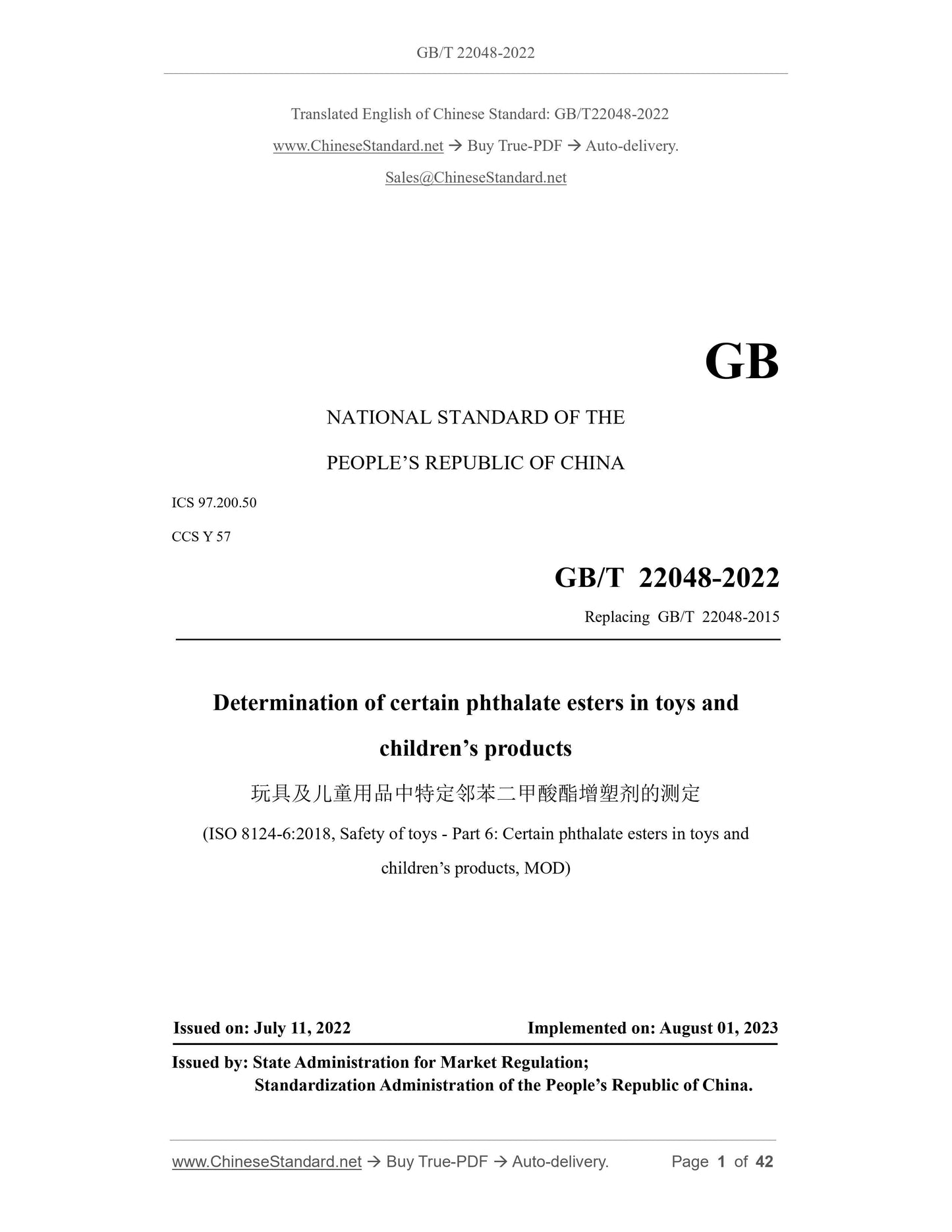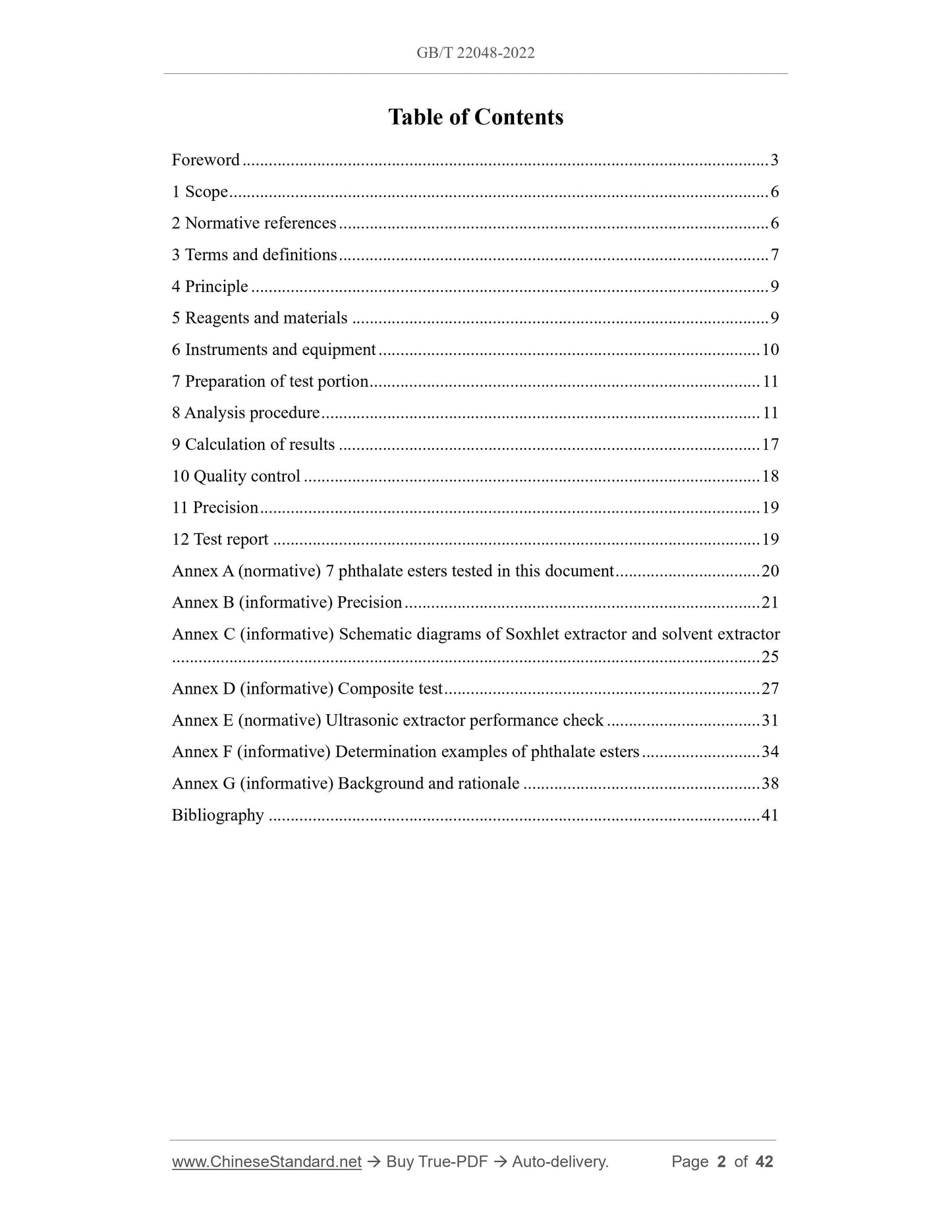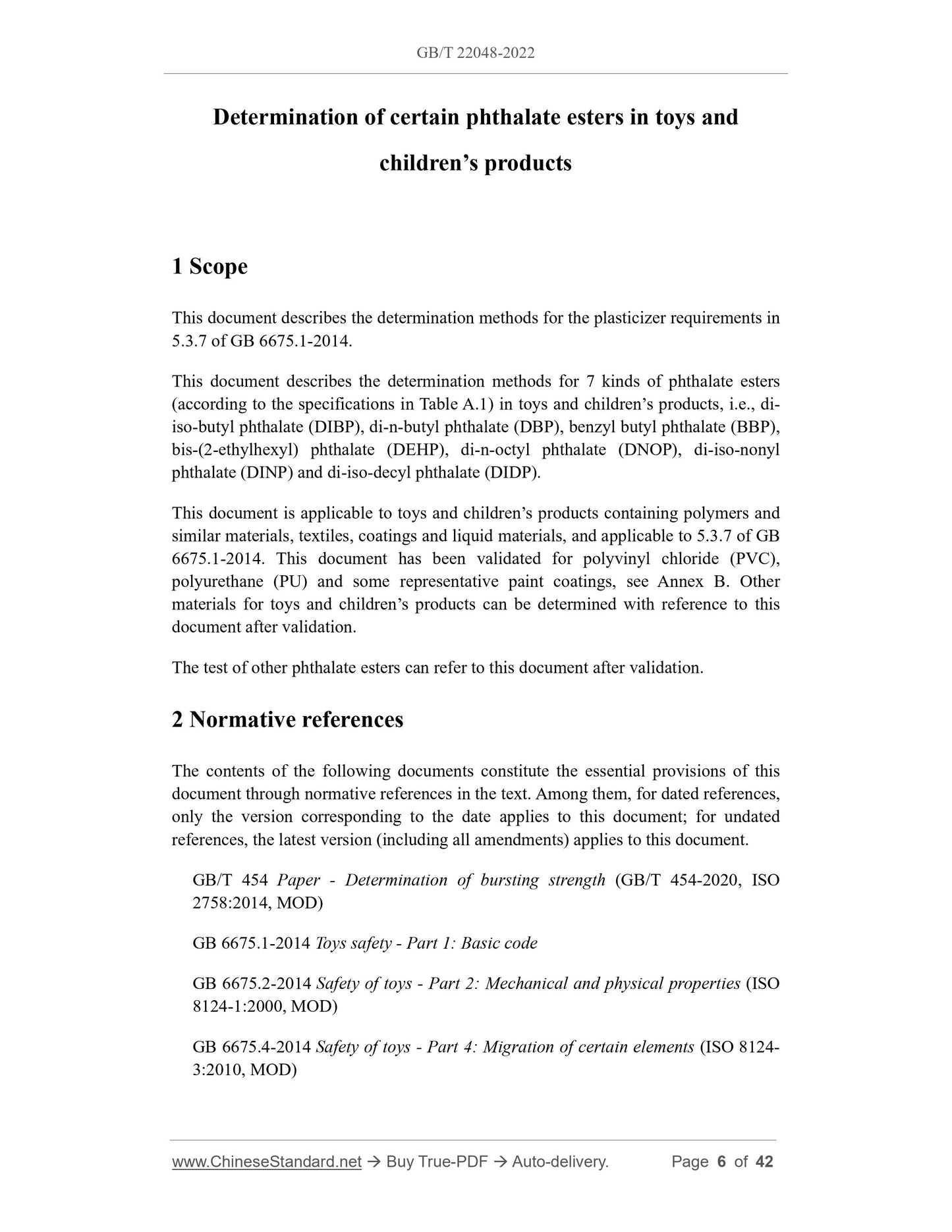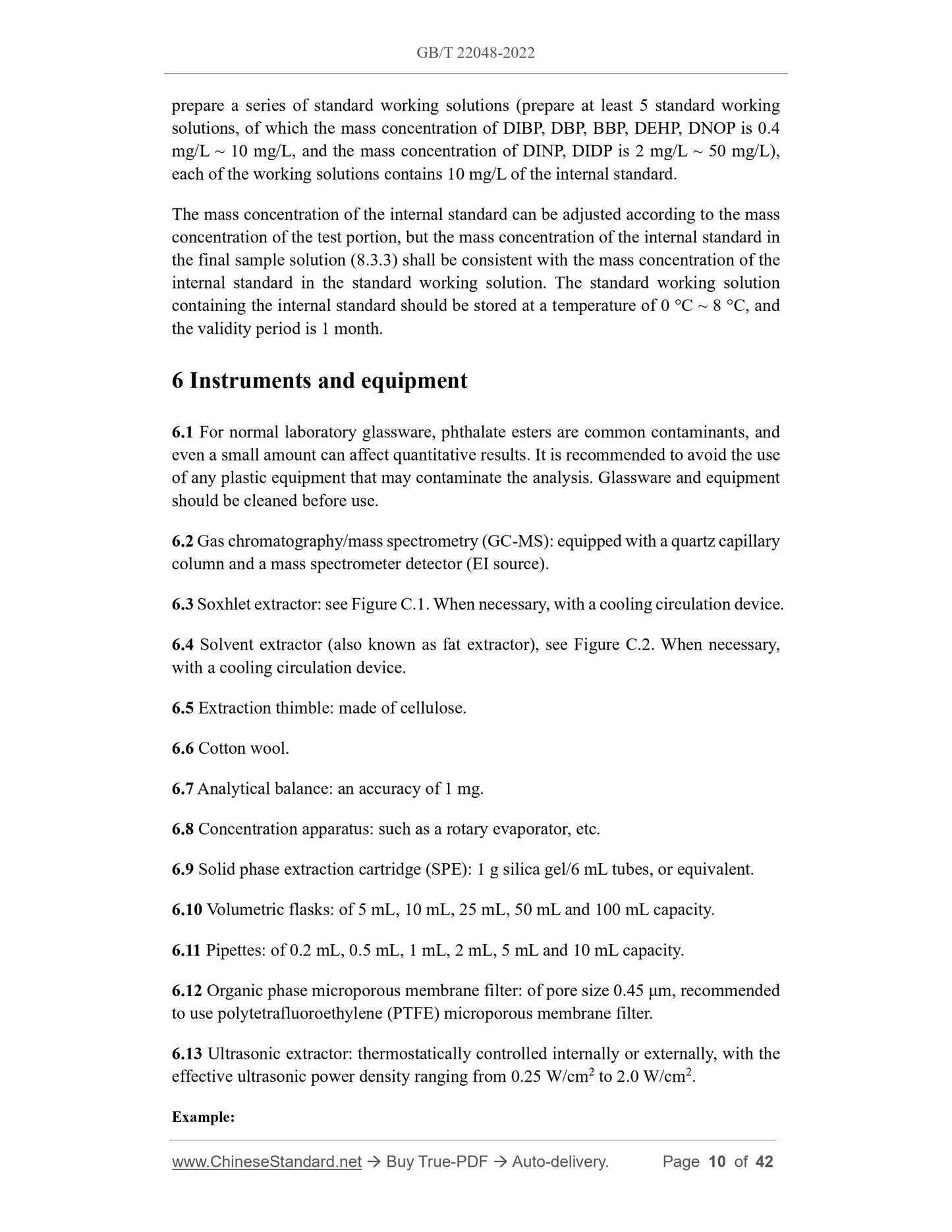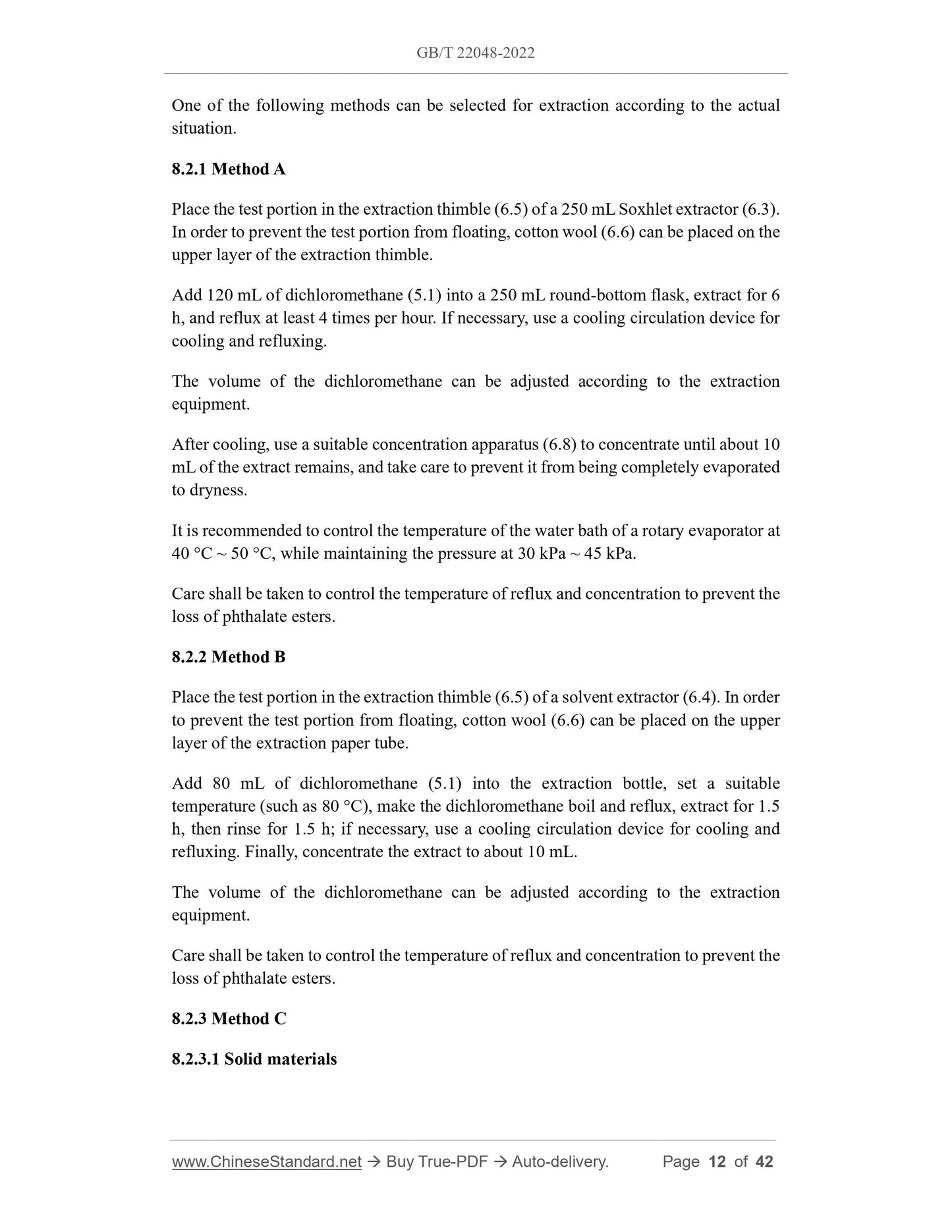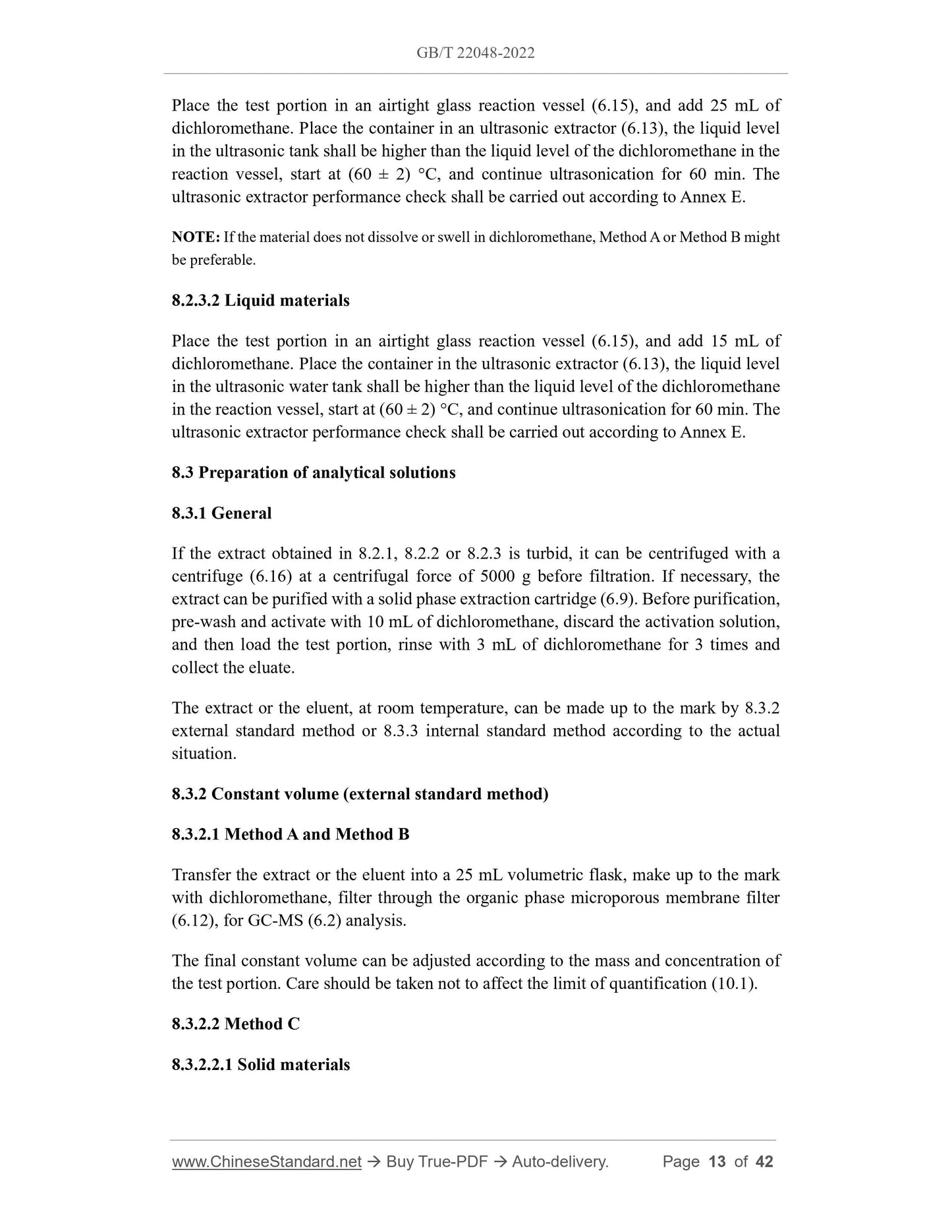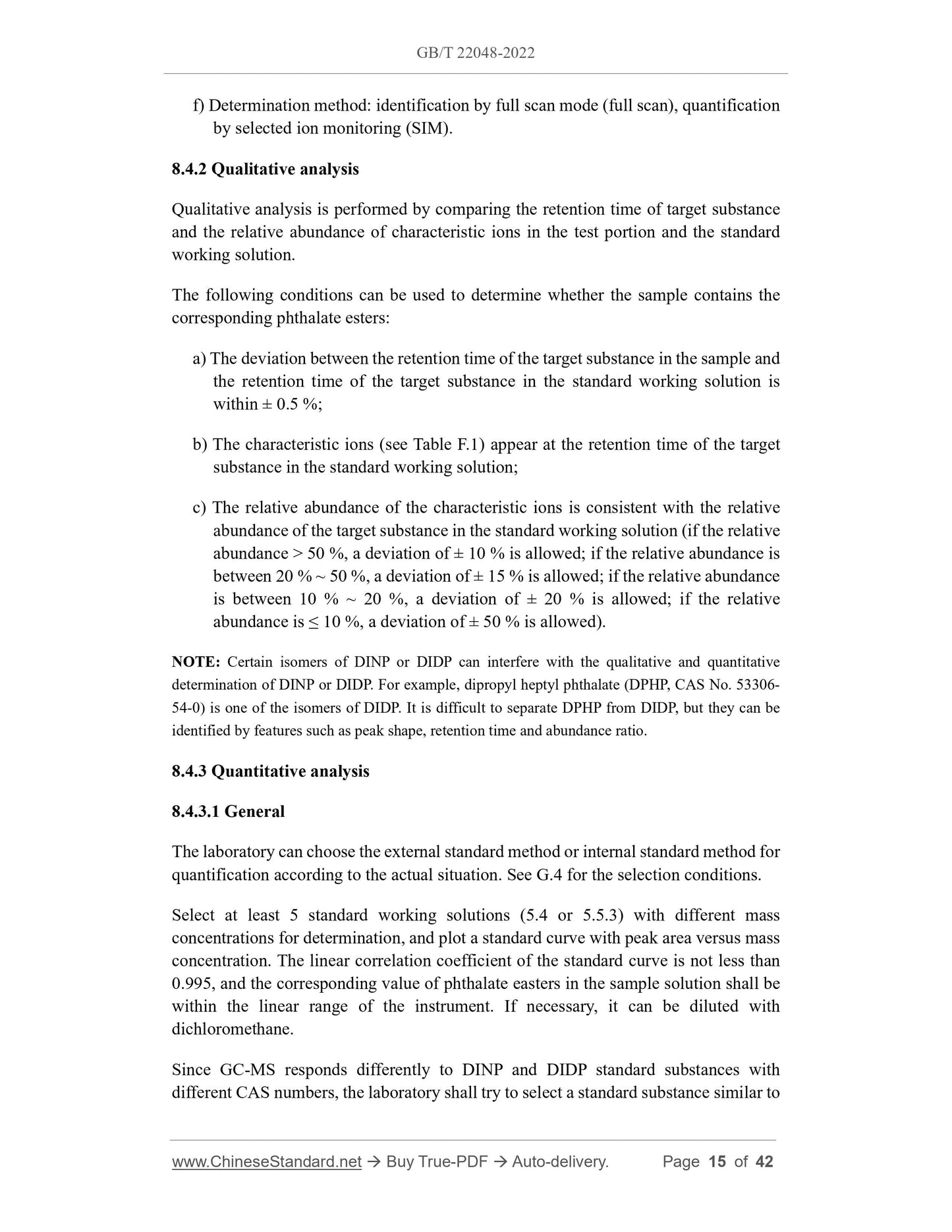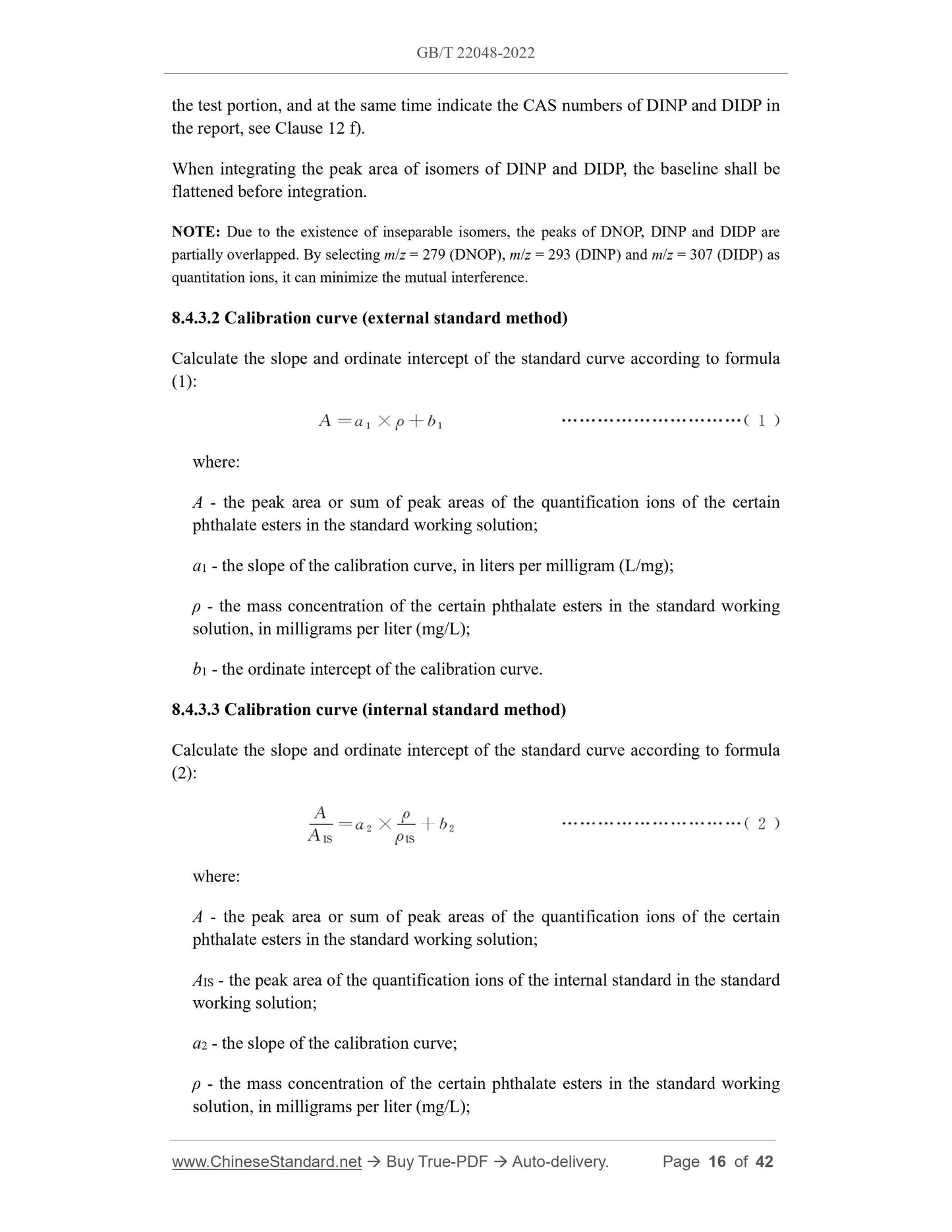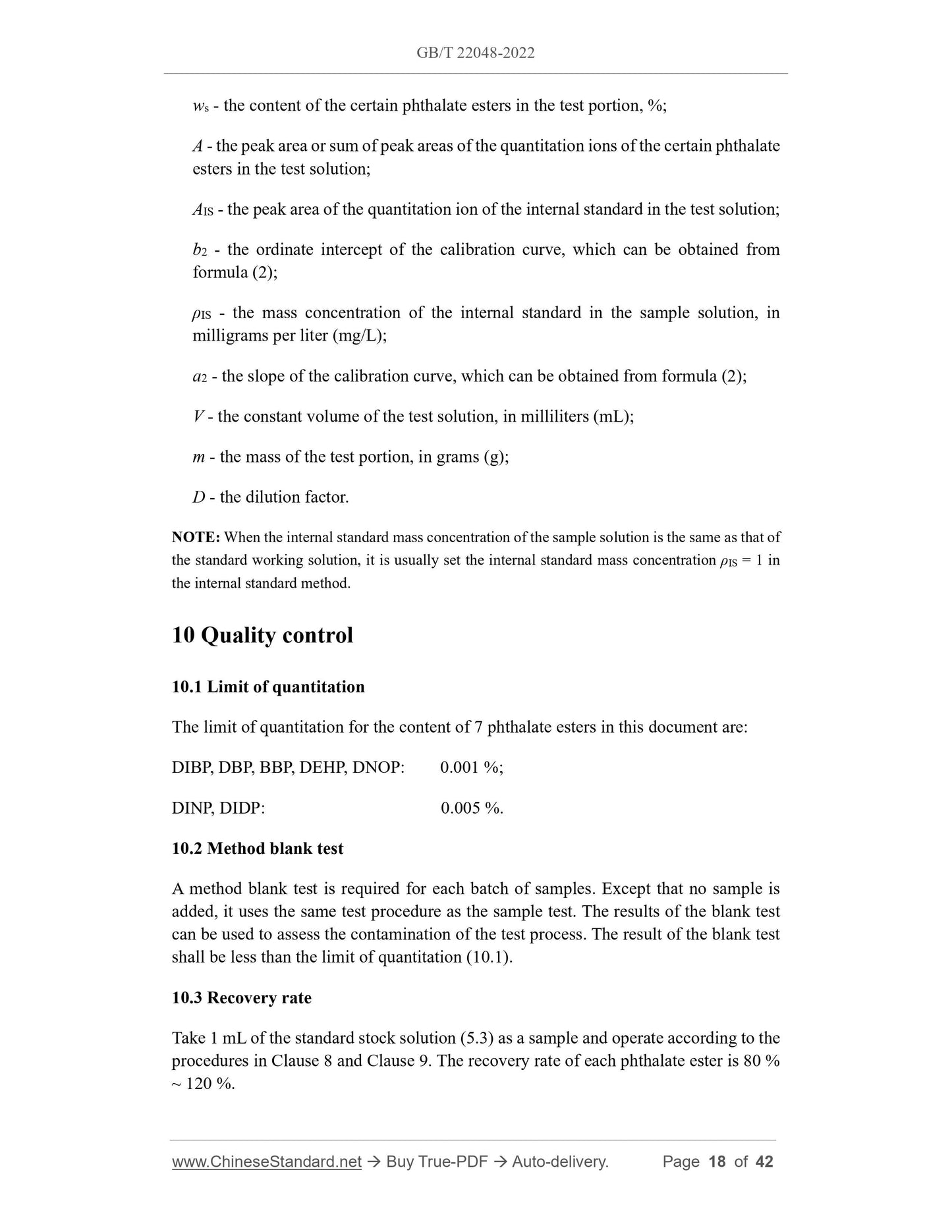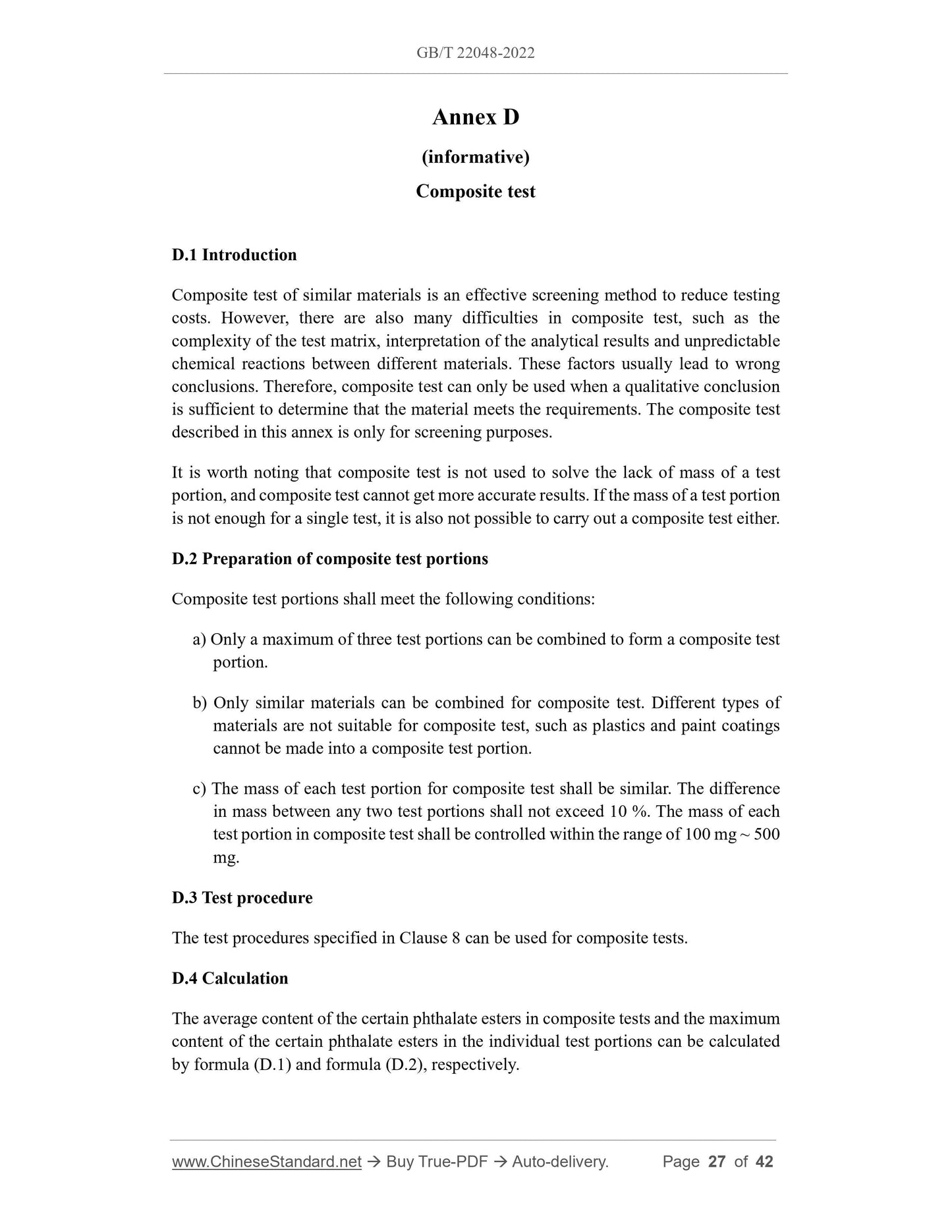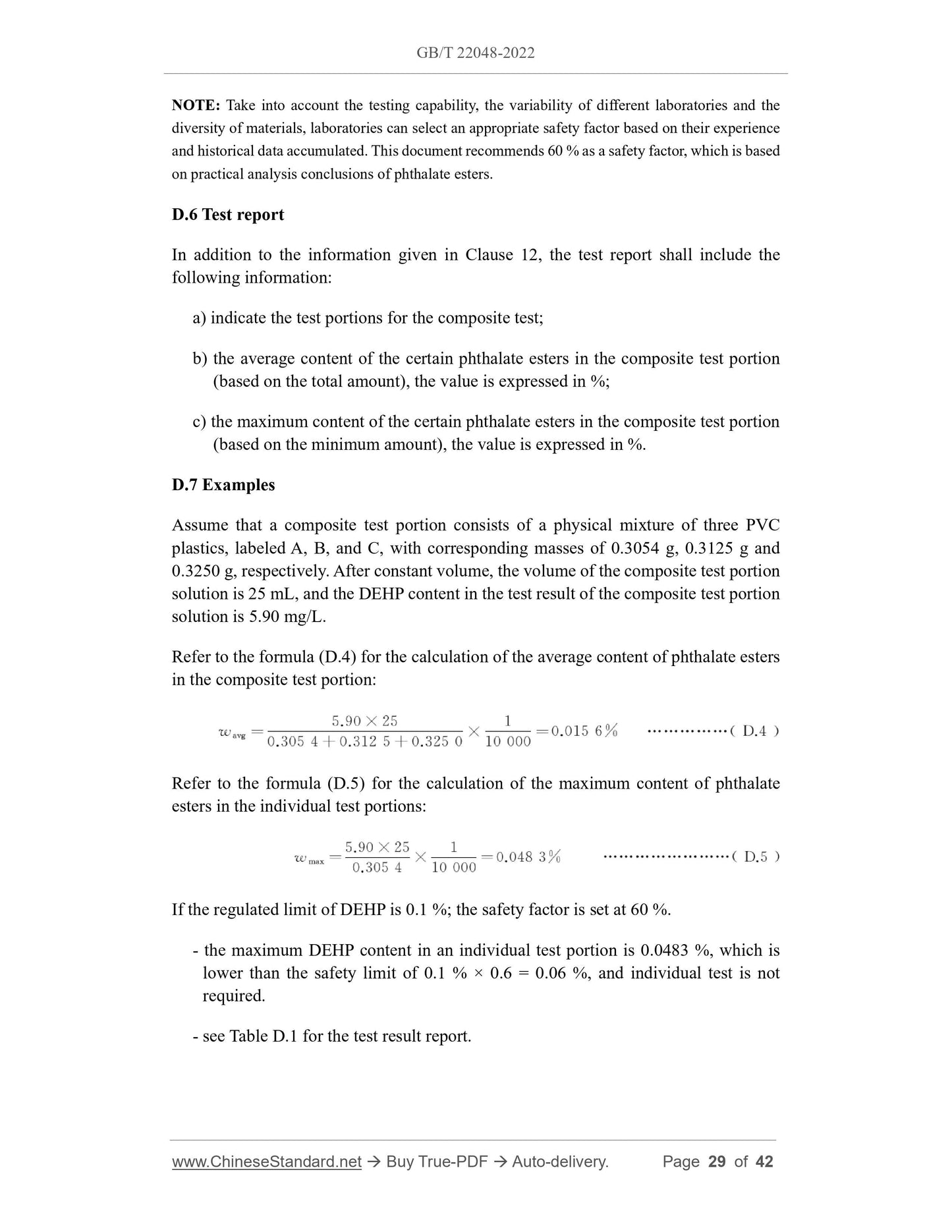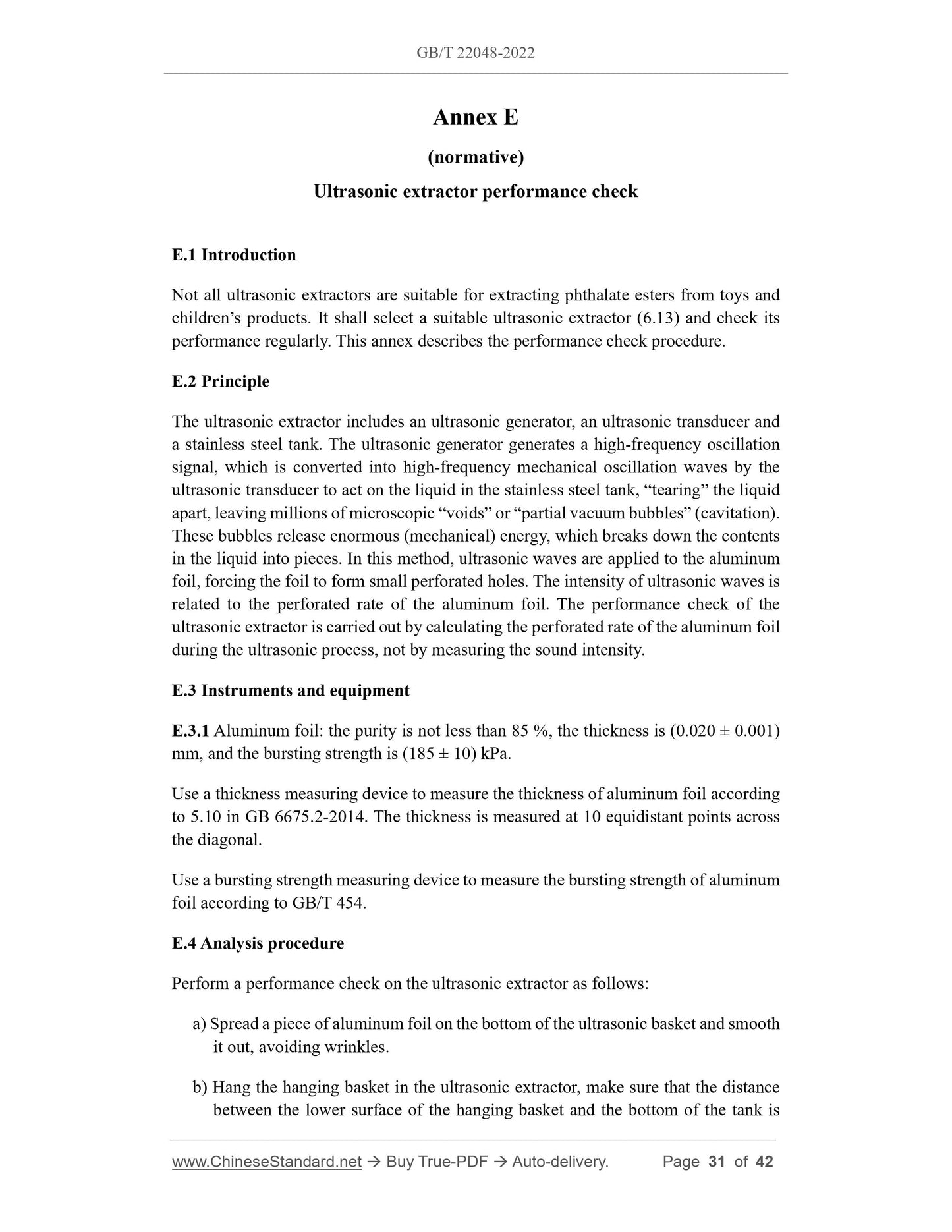1
/
of
12
www.ChineseStandard.us -- Field Test Asia Pte. Ltd.
GB/T 22048-2022 English PDF (GB/T22048-2022)
GB/T 22048-2022 English PDF (GB/T22048-2022)
Regular price
$440.00
Regular price
Sale price
$440.00
Unit price
/
per
Shipping calculated at checkout.
Couldn't load pickup availability
GB/T 22048-2022: Determination of certain phthalate esters in toys and children products
Delivery: 9 seconds. Download (and Email) true-PDF + Invoice.Get Quotation: Click GB/T 22048-2022 (Self-service in 1-minute)
Newer / historical versions: GB/T 22048-2022
Preview True-PDF
Scope
This document describes the determination methods for the plasticizer requirements in5.3.7 of GB 6675.1-2014.
This document describes the determination methods for 7 kinds of phthalate esters
(according to the specifications in Table A.1) in toys and children’s products, i.e., di-
iso-butyl phthalate (DIBP), di-n-butyl phthalate (DBP), benzyl butyl phthalate (BBP),
bis-(2-ethylhexyl) phthalate (DEHP), di-n-octyl phthalate (DNOP), di-iso-nonyl
phthalate (DINP) and di-iso-decyl phthalate (DIDP).
This document is applicable to toys and children’s products containing polymers and
similar materials, textiles, coatings and liquid materials, and applicable to 5.3.7 of GB
6675.1-2014. This document has been validated for polyvinyl chloride (PVC),
polyurethane (PU) and some representative paint coatings, see Annex B. Other
materials for toys and children’s products can be determined with reference to this
document after validation.
The test of other phthalate esters can refer to this document after validation.
Basic Data
| Standard ID | GB/T 22048-2022 (GB/T22048-2022) |
| Description (Translated English) | Determination of certain phthalate esters in toys and children products |
| Sector / Industry | National Standard (Recommended) |
| Classification of Chinese Standard | Y57 |
| Word Count Estimation | 32,352 |
| Issuing agency(ies) | State Administration for Market Regulation, China National Standardization Administration |
Share
